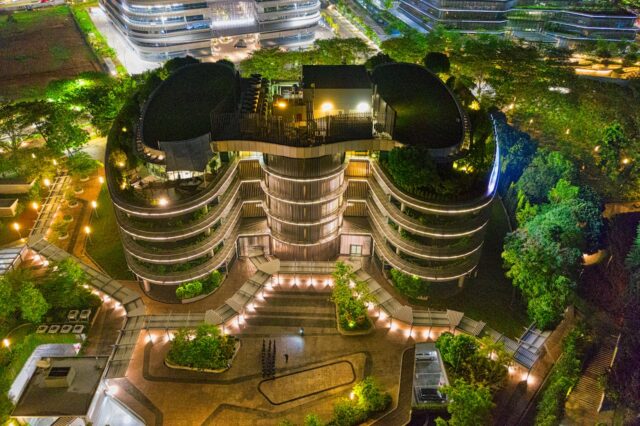The Triple Bottom Line LEED Model is an innovative framework that was created to assist corporations, organizations, and individual people in evaluating the overall impact of their construction projects. The creators and operators of a building may guarantee that their structure is as energy-efficient, sustainable, and useful to the society around it by addressing the social, environmental, and economic effect of the project.
The term “triple bottom line” refers to these three aspects of a business. A dedication to the triple bottom line entails thinking about more than just the profitability of a project, as well as taking into account more than just the project’s environmentally friendly qualities or its level of social responsibility.
When designing a green building, the primary objective is to establish all three aspects at the same time as the structure is being constructed. A green building should have an improved value, which will result in higher profit. Additionally, it should have a design that is kind to the environment, and it should also serve its users and the community effectively.

Identify Your Goals and Objectives
The process of determining your aims and objectives is the first thing you need to do in order to maximize the positive effect of your project using the Triple Bottom Line in LEED.
Consider the following: why am I putting my money into this project? What do I want to achieve with my efforts? In order to make sure that all of your choices are made in line with a distinct vision for the project, it will be helpful for you to respond to these questions.
In addition to this, it will assist you in determining the particular goals that you are seeking, whether that be a decrease in energy consumption, the incorporation of environmentally friendly technology, or an improvement in the quality of life for In addition to this, it will assist you in determining the particular goals that you are seeking, whether that be a decrease in energy consumption, the incorporation of environmentally friendly technology, or an improvement in the quality of life for tenants. This will also serve as a guide for you throughout the process of choosing relevant LEED certifications and efforts to prioritize across the whole of the project.
Establish The Path Towards Your Triple Bottom Line LEED Model
The following phase, after determining what you want to do, is to plan out how you will go about accomplishing those objectives. Developing a detailed strategy for the project’s long-term viability that outlines specific tactics and steps to take at each stage of the endeavor is the first step in this approach. Consider the many ways in which you may benefit from LEED efforts, from the procurement of environmentally friendly materials and technology to the instruction of occupants on how to reduce their energy use and save money. Lastly, make sure that performance is measured throughout the whole process, and don’t forget to praise achievement when it’s warranted.

Develop a Comprehensive Plan for Implementation
In order to successfully execute the Triple Bottom Line LEED green buildings, it is crucial to first develop a detailed strategy. To get started, do an analysis of the present environmental, social, and economic implications of your actions. Think about the goals you wish to accomplish and how you may continually incorporate environmentally friendly policies and procedures. Consider obtaining materials that are favorable to the environment, using environmentally conscious technology where at all feasible, and instructing renters on what kinds of actions they should do to help the environment. In conclusion, it is important to establish objectives, monitor performance, and recognize accomplishment when it is warranted.
Utilize Technology for Tracking Progress and Efficiency Gains
When it comes to putting the Triple Bottom Line into action, technology is a crucial instrument. Consider using data tracking and analytics as a means of monitoring progress, determining areas in need of improvement, establishing targets, and evaluating performance. Technology may also provide insights into how much of an effect the building is having on the environment while tracking energy efficiency improvements and resource use. You may increase your efforts to be more sustainable while still producing outcomes, controlling risk, and attaining success by making use of highly effective technological solutions.
Perform Post-Project Assessments
After you have finished a construction project, it is important to evaluate how well your efforts are doing and make adjustments to any areas that need to be improved. Post-project evaluations allow you to monitor how the building is being used and make adjustments to any procedures, technologies, or practices that may be improved in order to increase their level of effectiveness.
In addition, you should bring the Triple Bottom Line in conversation with yourself on a regular basis in order to continuously improve and advance their sustainable policies.



